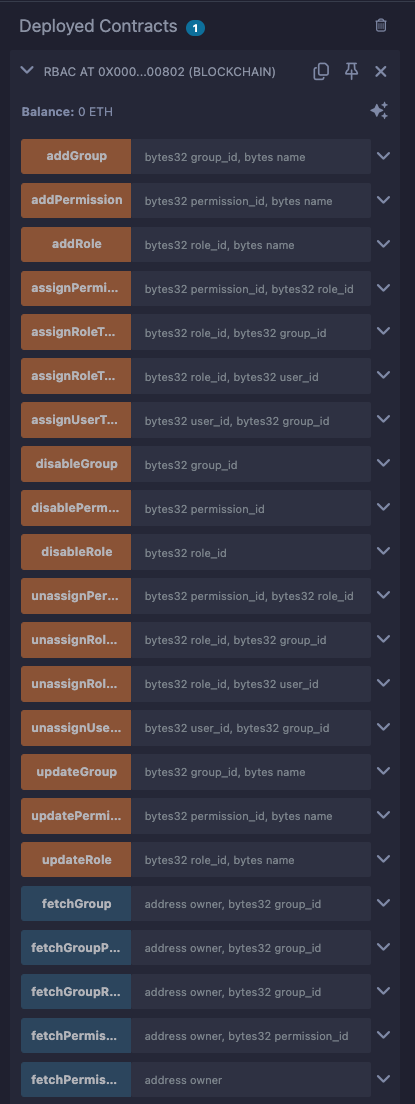Prerequisites
- Basic understanding of blockchain, EVM, and RBAC concepts.
- Using the Remix IDE with MetaMask configured to interact with a peaq network.
- You have token funds available in the wallet connected to the a peaq network.
Instructions
1. Setup Remix IDE
- Open the Remix website.
- Create a new blank workspace for the precompiles.
2. Create a New File
- In your Remix workspace, create a new file named
rbac.sol. - Copy the content of the rbac precompile file from the peaq network node precompile page and paste it into the
rbac.solfile. The precompile is found at the peaq node source code.
3. Compile the Contract
- Compile the
rbac.solfile by clicking on the Solidity Compiler tab and selecting the appropriate compiler version. - Ensure the compilation is successful and generates the ABI file needed for interacting with the smart contract.
4. Deploy and Interact with the Contract
- Under the Deploy and Run Transactions tab, select Injected Provider - MetaMask as the environment.
- Ensure your chain ID matches the selected network (peaq/agung).
- Choose the account with sufficient token funds.
- Set the contract address to
0x0000000000000000000000000000000000000802. - Click At Address to load the deployed contract into the interface.

5. Interact with the Functions
The RBAC smart contract provides extensive role-based access management capabilities. Below are some key functions categorized by their purpose:Role Management
- addRole
- Parameters:
role_id: A unique identifier for the role.name: Bytes representing the name of the role.
- Behavior: Adds a new role to the system.
- Result:
- Verify the transaction in MetaMask or Remix.
- Confirm the RoleAdded event in the Remix terminal.
- Parameters:
- updateRole
- Parameters:
role_id: Identifier of the role to update.name: Updated name in bytes.
- Behavior: Updates an existing role.
- Result:
- Verify the transaction in MetaMask or Remix.
- Confirm the RoleUpdated event in the Remix terminal.
- Parameters:
- disableRole
- Parameters:
role_id: Identifier of the role to disable.
- Behavior: Disables an existing role.
- Result:
- Verify the transaction in MetaMask or Remix.
- Confirm the RoleRemoved event in the Remix terminal.
- Parameters:
Permission Management
- addPermission
- Parameters:
permission_id: A unique identifier for the permission.name: Bytes representing the name of the permission.
- Behavior: Adds a new permission.
- Result:
- Verify the transaction in MetaMask or Remix.
- Confirm the PermissionAdded event in the Remix terminal.
- Parameters:
- assignPermissionToRole
- Parameters:
permission_id: Identifier of the permission.role_id: Identifier of the role.
- Behavior: Assigns a permission to a role.
- Result:
- Verify the transaction in MetaMask or Remix.
- Confirm the PermissionAssigned event in the Remix terminal.
- Parameters:
Group Management
- addGroup
- Parameters:
group_id: A unique identifier for the group.name: Bytes representing the group name.
- Behavior: Adds a new group to the system.
- Result:
- Verify the transaction in MetaMask or Remix.
- Confirm the GroupAdded event in the Remix terminal.
- Parameters:
- assignUserToGroup
- Parameters:
user_id: Identifier of the user.group_id: Identifier of the group.
- Behavior: Assigns a user to a group.
- Result:
- Verify the transaction in MetaMask or Remix.
- Confirm the UserAssignedToGroup event in the Remix terminal.
- Parameters:
For more exhaustive definitions please look at the RBAC Operations in the SDK.

